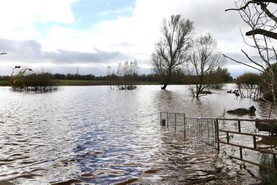Last week, some farmers participating in the Sheep Welfare Scheme were asked to send the Department their 2018 sheep welfare action book for inspection.
Hill flocks had the choice of some additional actions, such as meal-feeding lambs post-weaning or mineral supplementing lambs pre-weaning.
The 2018 Sheep Welfare Scheme year commenced on 3 February 2018 and any actions recorded for the 2018 scheme year should be recorded in the 2018 scheme action record book. However, there are some actions that some farmers cannot complete until the breeding season gets under way; for example, mineral supplementation or scanning.
A Department of Agriculture spokesperson clarified the matter this week: “In short, there is no benefit in submitting a blank scheme action record book to the sheep welfare section.
“If, for example, scanning was completed prior to 3 February 2018, then this scanning action will be taken as fulfilling the criteria for the 2017 scheme year and should be recorded in the 2017 scheme action record book.”
Process
“The letter, which is sent to the scheme participant, will clearly state the year the action book is being requested for and the actions that are being checked.
“If a farmer has not completed the actions for the relevant year, in this case 2018, the farmer should write a note of explanation to the sheep welfare section, so that the scheme action record book may be requested at a later date when the action is complete.
“The same applies to the mineral supplementation post-mating measure – the date supplementation is given should be recorded and if that date falls within the 2018 scheme year, then it should be recorded in the 2018 scheme action record book.
Other actions
The Department is also reminding any farmers who have chosen the parasite control (faecal egg count) action that the closing date for lowland flocks having this action completed by is 30 September 2018.
Two faecal egg counts must be taken from lambs between 1 June and 30 September and these samples must be tested by a Department-approved laboratory (list available on the Department’s website).
In the case of hill flocks, one sample must be taken from lambs post-weaning and sent for analysis to a Department approved laboratory.






 This is a subscriber-only article
This is a subscriber-only article










SHARING OPTIONS: